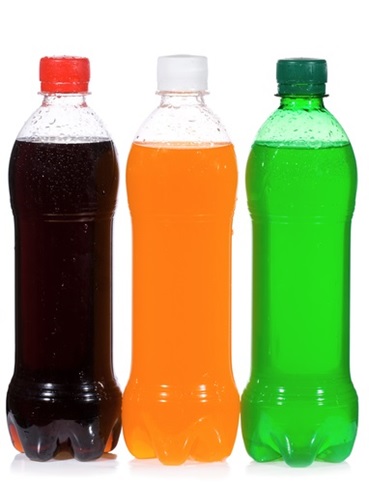Aerated drinks are loved by everybody. The fizzy effect is their main attraction. Only the manufacturer and packager understand the pain of retaining that fizz until it reached the end customer. The hissing sound that we hear while opening the seal of the bottle is the proof of ample quantity of carbon dioxide present in the bottle. The pressure inside the bottle is much higher than the pressure in the surrounding. There is a huge quality check behind every bottle that is being manufactured and filled, so that high-quality product reached to the customer.
Preform testing – Testing of bottles starts right from its preform. It is always good to start early than rectifying later. To look out for any defects, an optical device called polariscope is used. It has an incident light and two Polaroid lenses. The sample is kept between the light and lens. Ideally, the sample allows the light to pass without any refraction. If the light encounters any defect, the light would refract from its path and create birefringence effect of the light spectrum. The pattern creates the light can be referred from the chart to determine the type of defect. The sample is tested on two angles, 45° and 90°. This is mere visual observation but very crucial one. It decides the quality of whole production line.
Vacuum leak test – If the seal is faulty, it would be unable to hold the pressure for long. Vacuum leak tester determines the seal integrity of the bottle. The sample bottle is cut from the neck with seal intact and placed inside the kit. A vacuum is of up to 175 psi is created inside the kit. Due to the negative pressure created inside the kit, the air inside the sample will be sucked out. When the vacuum is released, the bottle will regain its shape. If the bottle doesn’t regain it shaped and remain collapsed, it is faulty.
GV shaker test – This is a very important test to understand the behaviour of packing after long transits. The GV shaker along with a carbonation assembly determines the retention of carbon dioxide in the bottle. Due to excessive shaking the pressure is building up inside the bottle, this pressure is measured by a gauge. The pressure should not decrease throughout, otherwise, the fizz of the drink vanishes. The pressure is supposedly leaking from the seal. Thus, seal design and threads need to be reconsidered.
Thickness testing – Thickness testing is important to determine the evenness in the shape of the bottle. From neck to the base. Magna Mike 8600 helps in performing non-destructive test of the bottles. If there is unevenness in the bottle structure, it may get damaged during the transit, before reaching to the buyer. It works on the principle of hall effect. The hall voltage developed due to a thickness of the bottle is sensed by hall sensor and then displayed on the screen. This device is built with high precision and allows real time data logging. This is a trademark product of Olympus and Presto is the authorised supplier of Magna Mike 8600. If any manufacturing unevenness is missed by polariscope, that can be identified by this device.
Balancing test – Using a base clearance gauge, the depth of the base is measured. This contributes to the balancing and stability of the bottle. You must have seen that some bottles are very well designed, they don’t topple even after applying a jerk external force. This all is achieved by measuring the depth of depression as per the specifications set for the desired shape and size. It is mere a gauge with a needle style plunger. The movement of the plunger is reflected by deflection of the needle. It can accommodate a bottle of 500 ml to 2 litres.
Water Bath tester – In the filling line, the liquids have a high temperature when filled. The bottles should not deform when exposed to hot liquid. To estimate the behaviour, the bottles are immersed in hot water and a stirrer keeps the temperature uniform throughout the tub. The bottles can be directly immersed into the water or placed in a cavity and then the cavity is placed inside the tub. The temperature is kept below the boiling point.
BOD Incubator – This is a very important device to check the quality of the liquid packed inside the bottle. The incubator creates an environment ideal for supporting the culturing of microorganisms. If there is any leakage in the seal, the microorganisms enter in the bottle and start reproducing. It works on the temperature range from 10°C to 60°C.
